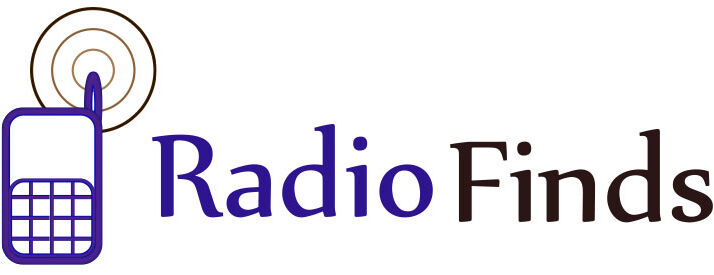Exploring OTA Channels in Your Area
Are you curious about the OTA (Over-the-Air) channels available in your area? In this comprehensive guide, we’ll dive into the world of OTA channels, providing you with all the information you need to make the most of this free, high-quality television programming.
What are OTA Channels?
OTA channels are free television channels that you can access using an antenna, without the need for a cable or satellite subscription. These channels are broadcast over the air by local television stations, offering a wide variety of programming, including:
- Local news
- Network shows (ABC, CBS, NBC, FOX, etc.)
- Public broadcasting (PBS)
- Educational content
- Sports
- Movies
The Benefits of OTA Channels
There are numerous advantages to exploring the OTA channels in your area:
- Cost Savings: OTA channels are entirely free, allowing you to save money on monthly cable or satellite bills.
- High-Quality Picture: Many OTA channels are broadcast in high definition (HD), providing a crystal-clear picture quality.
- Local Content: OTA channels offer local news, weather, and sports coverage that may not be available through cable or satellite providers.
- Educational Programming: Public broadcasting stations, such as PBS, provide a wealth of educational content suitable for all ages.
- Backup for Emergencies: In case of a power outage or other emergency, OTA channels can keep you informed and entertained.
How to Access OTA Channels

To access OTA channels in your area, you’ll need the following:
- An HDTV Antenna: Choose an antenna that is compatible with your television and suitable for your location. Factors to consider include:
- Indoor vs. outdoor antennas
- Directional vs. omnidirectional antennas
- Range and reception quality
- A Television with a Built-in ATSC Tuner: Most modern HDTVs have built-in ATSC tuners, which allow you to receive digital OTA signals. If your TV doesn’t have a built-in tuner, you can purchase an external ATSC tuner.
- Proper Antenna Placement: Position your antenna in a location that provides the best reception. This may require some experimentation, as factors like distance from broadcast towers, obstacles, and interference can affect signal strength.
Finding Available OTA Channels
To discover which OTA channels are available in your area, you can:
- Use Online Resources: Websites like AntennaWeb and TVFool provide tools to help you determine which channels you can receive based on your location.
- Perform a Channel Scan: Most HDTVs have a built-in channel scanning feature that searches for available OTA channels. Consult your TV’s user manual for instructions on how to perform a channel scan.
Maximizing Your OTA Channel Experience
To get the most out of your OTA channels, consider the following tips:
- Invest in a Quality Antenna: A high-quality antenna can make a significant difference in the number of channels you receive and the clarity of the picture.
- Experiment with Antenna Placement: Try different locations and orientations for your antenna to find the best reception. Factors like distance from windows, height, and proximity to electronic devices can all impact signal strength.
- Use a Signal Amplifier: If you live far from broadcast towers or in an area with weak signals, a signal amplifier can help boost your reception.
- Integrate with Streaming Services: Combine your OTA channels with streaming services like Netflix, Hulu, or Amazon Prime Video to create a comprehensive, cost-effective entertainment package.
OTA Channels and Cord-Cutting
OTA channels have become increasingly popular among cord-cutters – people who have chosen to cancel their cable or satellite subscriptions in favor of alternative entertainment options. By combining OTA channels with streaming services and other online content, cord-cutters can enjoy a diverse range of programming at a fraction of the cost of traditional pay-TV packages.
| Pros of Cord-Cutting with OTA Channels | Cons of Cord-Cutting with OTA Channels |
|---|---|
| Significant cost savings | Limited channel selection compared to cable/satellite |
| High-quality picture and sound | Potential reception issues in some areas |
| Access to local content | No access to premium channels (HBO, Showtime, etc.) |
| Flexibility to combine with streaming services | Requires initial investment in antenna and equipment |
The Future of OTA Channels
As technology continues to advance, the future of OTA channels looks bright:
- ATSC 3.0: The next generation of OTA broadcasting, ATSC 3.0, promises even better picture and sound quality, improved reception, and interactive features.
- Integration with Smart TVs: Many smart TV manufacturers are incorporating OTA channel support and enhanced features, making it easier for users to access and enjoy free, high-quality programming.
- Increased Cord-Cutting: As more people become aware of the benefits of OTA channels and the cost savings associated with cord-cutting, the popularity of OTA channels is likely to continue growing.
Conclusion
Exploring the OTA channels in your area can open up a world of free, high-quality television programming. By investing in a quality antenna, experimenting with placement, and combining OTA channels with streaming services, you can create a comprehensive, cost-effective entertainment experience. As technology advances and cord-cutting continues to gain popularity, OTA channels are poised to play an increasingly important role in the future of television.
So, grab an antenna, start scanning for channels, and enjoy the wealth of free, local content available right in your own backyard!







